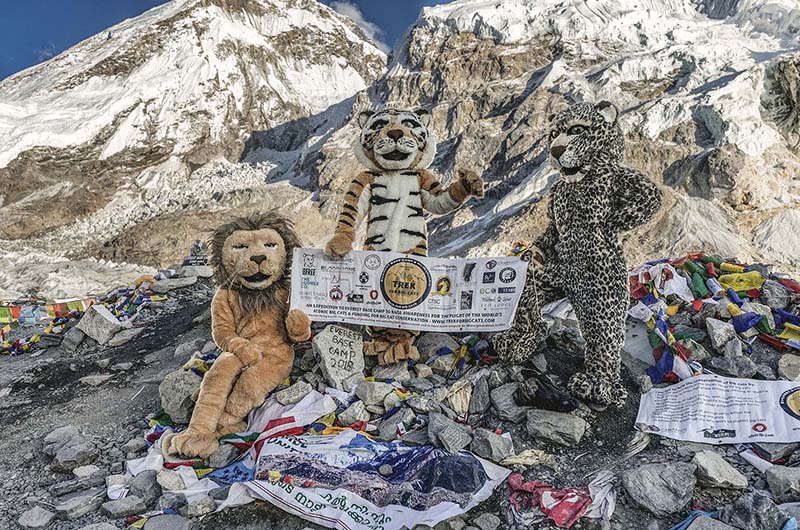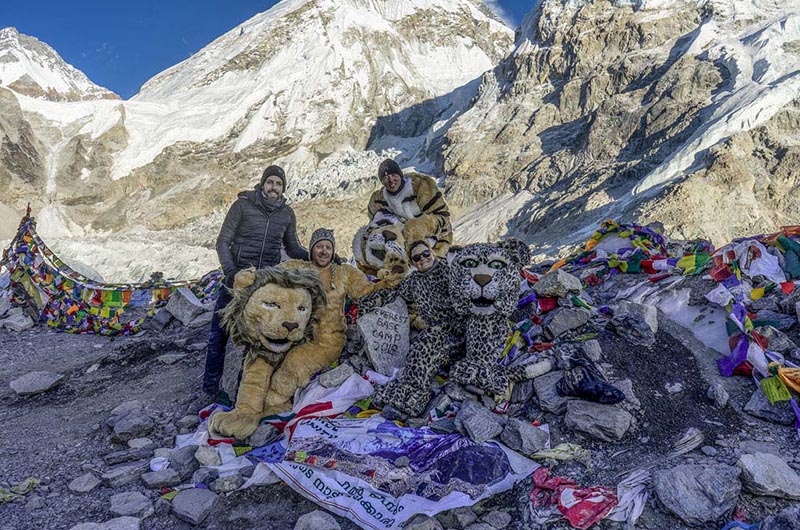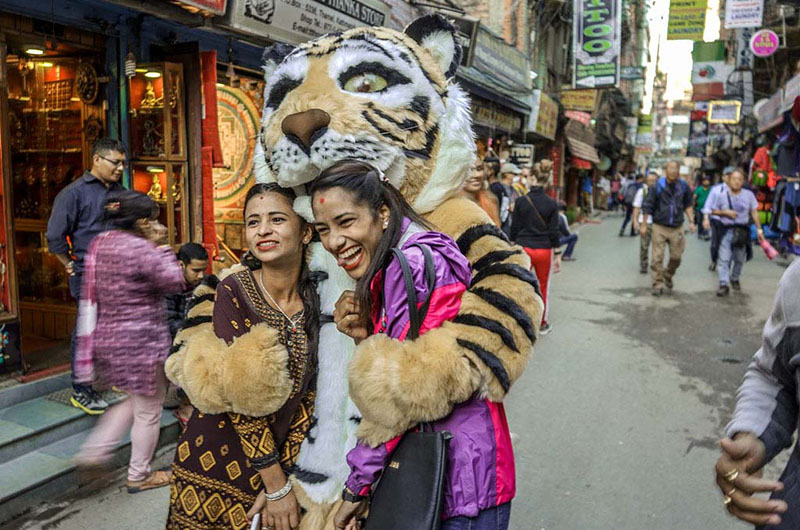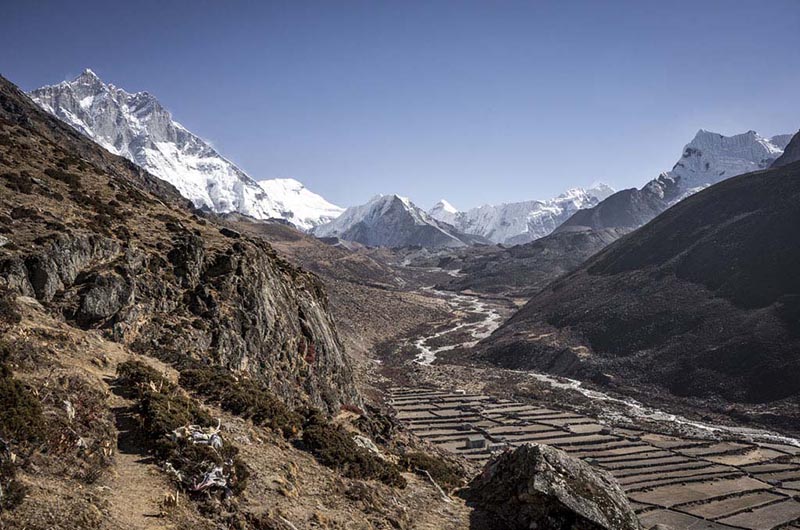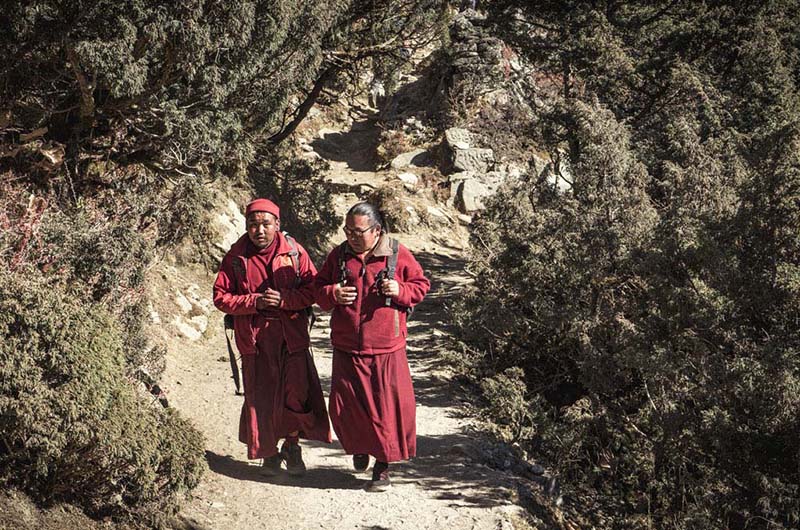Big Cats Conquer Everest Base Camp
- Written by Lukas Svoboda and Gareth J. Legg
- -
- 27th Feb 2019
- -
- Expedition
After almost a year of planning and a lot of dedication and passion, the Trek for Big Cats team have achieved their goal of reaching Everest Base Camp. The team had to muster up every ounce of energy, one paw at a time, with many factors making the challenge even tougher. The high altitude, dust, thin air, fatigue, and the mascots being rather cumbersome on the challenging rocky Base Camp trail. Our expedition however was a huge success, and we had a phenomenal response on the trail with trekkers and locals, as well as with local Nepalese news and media.
This fourteen-day trek to Everest Base Camp and back was an amazing experience. Our goal was to create more awareness around the plight of some of the world's large iconic cats. We were trekking in three full-length custom-handmade costumes representing lion, leopard, and tiger to draw attention to the campaign and highlight this conservation issue.
We were lucky enough to collaborate with The Humble Co and Humble Smile Foundation, a non-profit organization bringing oral care to people in need around the world. Throughout our trek we have distributed thousands of eco-friendly bamboo toothbrushes to children in Khumbu valley to help uplift these very vulnerable and remote communities. This project has been done through the Himalayan Trust Foundation and its amazing members.
The struggles and hardships that the Trek for Big Cats team experienced getting to Everest Base Camp paints an interesting analogy. It is the daily struggle that the world's big cats go through to survive in their natural environments and in captivity.
.
The Trek for Big Cats team included Gareth James Legg, who is a former ranger and safari guide in South Africa, founder, expedition team leader, and the lion. Tracey Bruton who is a current safari guide, co-founder, and the leopard. The last member is Lukas Svoboda, freelancer, camera, and the tiger, who studied Film and Visual Culture at Aberdeen University.
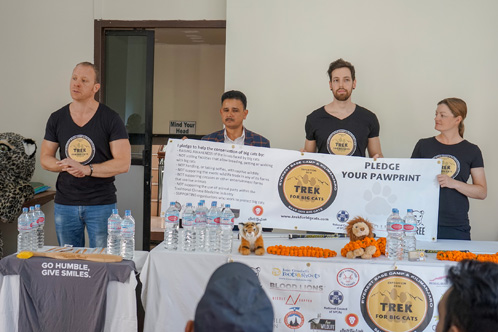

.
Why did we choose big cats?
Factors threatening the world's big cats include habitat loss, human-animal conflict, traditional Chinese medicine, the exotic pet trade, 'canned' hunting, commercial breeding farms, entertainment, disease, and poaching. Recently the bone trade industry has boomed. The bones are used to make wine for traditional Chinese medicine. The dramatic decline of tigers leads to the demand shifting towards lion and leopard bone. These factors are all leading to the decline of the world's big cats. These cats keep ecosystems healthy and maintain the predator/prey numbers.
They are also very important attractions in eco-tourism and generate income for wildlife conservation. Our mascots represent three of the most iconic big cats but, in turn, symbolise all of the world's most endangered large cats. Almost all species of wild cats are dramatically declining in numbers due to human factors.
.
Why did we pick Himalayas?
The main reason we chose Everest Base Camp as a final destination for our expedition was to draw public attention. It is unusual to meet three big masked cats on the trail and, true to say, nearly everybody stopped us, and we had a chance to talk to people, take pictures, and highlight the issue.
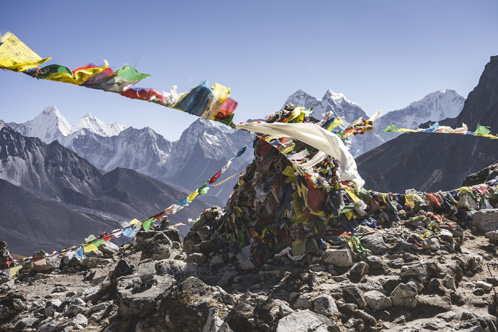

.
How did the expedition go?
Overall the whole project was a great success. We managed to visit some schools in the Himalayas where we had the opportunity to share our vision and inspire. We hope our actions highlighted the issue. The trek itself was very challenging and stressful.
The Expedition team arrived in Kathmandu at the Tribhuvan International filled with massive hope and anticipation of the up and coming big trek to base camp dressed as some of the most iconic and endangered big cats of the world. We realised that what lay ahead for the team was one of the biggest adventures of our lifetimes.
The next day afternoon there was a big press conference waiting for us. It was organized by Mr Mohan Lamsal from Makalu Adventures our Everest Base Camp tour operator and his assistant Brij Rajbhandari. This unusual expedition captured attention of many national and local media and by the end there were around thirty journalists including four Nepalese TV channels. They have been truly interested in our conservation trek and the charity work we have been doing.
.
After the conference we walked through the bustling streets of Thamel dressed in our big cat masks sharing with the passers-by our very powerful message. The enormity of what we had signed up for suddenly began to sink in: we had just a mere twenty-four hours to prepare final logistics and ensure the team had every item of gear we might need for the fourteen-day trek. The good thing about spending a few days in Kathmandu is that we were able to do some very valuable acclimatisation as Kathmandu sits at around 1,200 metres above sea level. This was very helpful with the trek, as the success of high-altitude trekking is all about the acclimatisation and the length of time you spend at altitude. We had many more challenges than just the cold weather, sheer cliffs, tough and rocky terrain. The altitude sickness and its deadly effects are life threatening if the correct treatment is not administered early enough and which normally demands evacuation off the mountain.
Most people do a fair amount of research before they embark on an adventure like this, and this we did too. However, we discovered that the flight from Kathmandu to Lukla Tenzing Hillary Airport is the fifth most dangerous airport in the world. Flying in Twin Otters that look as if they came out of the Second World War, also with Lukla having one of the poorest safety records in the world, our minds started to conjure up all sorts of scary situations. The airport is situated on a sheer cliff face in a small sherpa village. It is known as Lukla and is the gateway to the Himalayas and especially to the very popular Everest Base Camp trail.
.
The team had a restless night getting ready for the expedition. At crack of dawn we set out from the hotel to the Tribhuvan airport. We got to the departure hall which was filled with trekkers from all over the world eagerly waiting for their respective flights. We then boarded a small bus and were driven to our Twin Otter plane. The sun was just hitting the Himalayas and we will not forget the feeling and exhilaration excitement that was pulsing through our bodies, the beauty and the massive adventure that lay ahead the next two weeks.
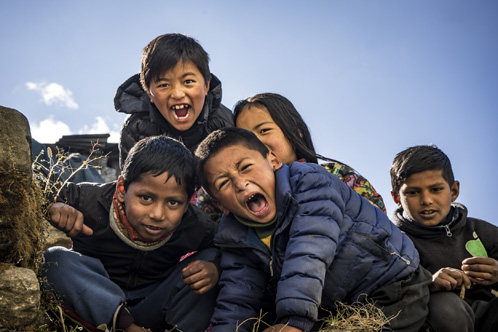
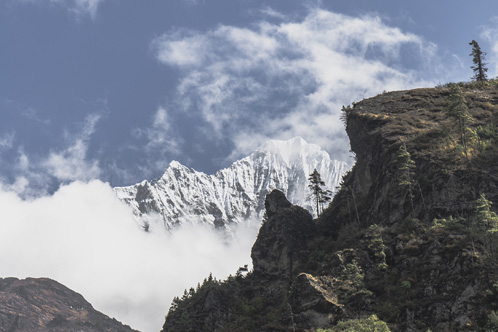
.
The Twin Otter plane only seated twelve people, and Gareth boarded the only seat left. It was up front right behind the cockpit and the two pilots. He said enthusiastically: 'My heart was racing, and I could see the entire flight from the front seat, like I was the pilot'. The two pilots were dressed very smartly, and both wore very cool black leather jackets and iconic aviator sunglasses. The engines fired up the noise, it was intense and all passengers including us put two small balls of cotton wool into the ears. It was given to us by the air hostess before we took off. The plane moved from side to side and the pilots did their last few cross checks. Then the handbrake was dropped, and the little plane shot forward down the runway and up in to the air. After leaving the Kathmandu area we changed course and flew straight towards the Himalayas. The rising sun revealed the views and they were spectacular. We all became mesmerised by the giants that were ahead of us.
The tiny airstrip is all you can see as the pilots turn the plane and prepare for landing. It seems to appear out of nowhere, and now all the stories and YouTube videos we have watched of the landing become real. The landing strip was tiny: we could see it all unfolding through the cockpit window. The landing strip is designed so that it slopes upward to the side of the mountain. The plane was coming down for the landing - our hearts racing - the entire plane was dead quiet; the plane came down with an enormous thud as we hit the runway. The twin props thrust into reverse as the engines screamed, and we coaxed our way up the 527-metre runway. The pilots turned into the parking bay and as the plane came to standstill and the doors opened, the adrenaline was still pumping and now the adventure had officially begun.
.
We grabbed our daypacks and went to pick up our gear and meet our guide Jire and his son and nephew, two porters who would be carrying our additional gear. Once we had met the team and suited up into our big cat costumes, we then started trekking the 6.2 kilometre to our first overnight stay in a tea house. These tea houses are built and run by local sherpa families: they live in the tea houses and offer very simple but cosy accommodation. The room consists of two single beds; there is no heating so, on winter treks, the rooms are very cold. The trekkers all then meet and eat in a communal dining area which has a big stove or wood burner in the middle of the room. The only source of heating, it is normally lit around sunset when all the trekkers are getting in. There is always a dash to huddle around the stove to warm the freezing hands and talk to others.
.
Meals are simple but wholesome, the most popular being dal bhat, a lentil curry soup with rice and curried vegetables. It is a staple for all local Nepalese people in the Himalayas and a great way to keep your carbs and energy levels up on the demanding trail to Everest Base Camp. Typically, the day is spent on the trail, walking an average of around ten to fifteen kilometres a day. The entire route is dotted with small sherpa villages along the way so there is always somewhere to stop and have a garlic soup or ginger lemon honey tea. The views and vistas are breath-taking and the higher up we got the vegetation became less. Once you get above 3,500 metres the yaks replace the mules, horses, and cows that one sees at the lower levels. The yaks are perfectly evolved to high-altitude living, with long shaggy coats for the winter and cloven hoofs that allow them to traverse the rocky trails and slopes while grazing.
.
The suspension bridges are crazy and some of them as high as 135 metres, crossing the numerous gorges and rivers that cross the Solo Khumbu valley. The trick to crossing them is not to look down. However, sometimes the bridges have more than just trekkers on them. Mules, cows, and porters running across the bridges with loads that are either going up the mountain or coming back down. It's not for the faint-hearted when the cabled suspension bridge starts swaying; it's rather scary the first time it happens. The trail is busy with trekkers coming up and down from the Base camp and the various outer routes; yaks and mules make the trail often very dusty, and one needs to watch where one walks as the trail is dotted with animal dung. Once we reached the higher altitudes the air became thinner and more difficult to breathe. We had all struggled with altitude headaches and temperature plummeting daily, but we were now just a day away from reaching our epic milestone of getting to Everest Base Camp. The morale of the team was high, and we were eternally grateful for the incredible knowledge and leadership of our sherpa guide Jire and two porters for getting us this far.
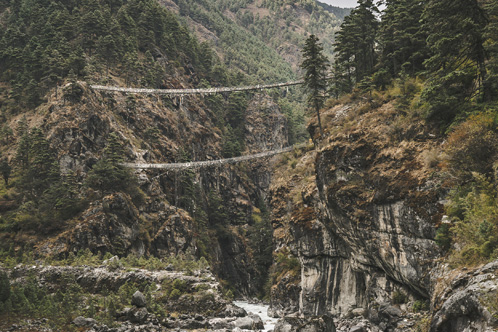
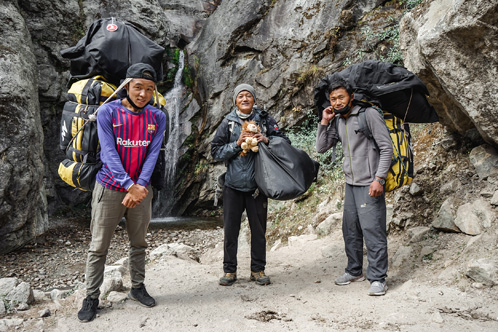
.
We eventually arrived at Gorak Shep, the last village before reaching Everest Base Camp. We dropped off our gear and then started the trek to Everest base camp fully dressed in our costumes. It was only three kilometres but took us close to four hours due to the rocky and treacherous trail. We arrived at the base camp later than we expected and only had forty-five minutes of light before the darkness and cold shrouded the valley. The views were absolutely amazing. There was a clear blue sky and the Everest peak was lit by the setting sun. We had never dreamt of the stillness except for the occasional avalanche of rock, ice, and snow. It was easy to become mesmerised by the beauty of the giants that surrounded us.
However, we had to be focussed, and recorded our important conservation message around the plight of the world's big cats and the environment. We then said our thanks to Sagamatha, Everest in Nepali, and headed back. It was dark, -27℃ and bitterly cold. We looked up and, true to say, we have never seen so many stars. Going back down was not easy: we were fully dressed in our costumes, and exhausted. The big costumes were rather clumsy and it was difficult to move in them. However, we were elated that we had reached our goal after almost a year of planning. We just stood there, at the foot of the highest mountain in the world, dressed in big cat costumes, all in aid of conservation. What a humbling experience!
.
Trek for Big Cats would like to give advice to ordinary people to assist with our cause; for instance, not taking part in pay-to-pet facilities or selfies with big cats, 'canned' hunting or trophy hunting, buying big-cat body-part souvenirs, or using traditional Chinese medicine or foods that contain big-cat body parts.
We are hoping that our expedition will inspire people around the world to stand up for the plight of the big cats and their environments, to ensure that these big cats remain living for many generations to come.

